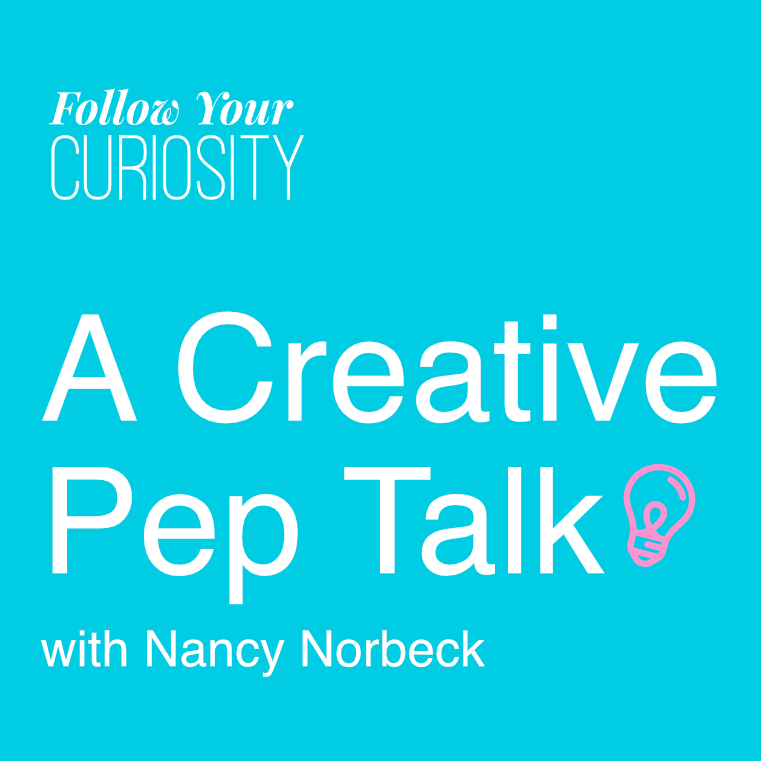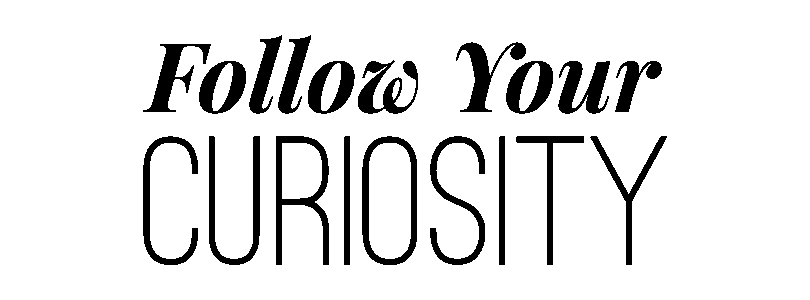
You’ve probably heard someone describe a performance as “electric,” or “electrifying,” and may even have used that term yourself. But how does that kind of performance happen, and what does it have to tell you about your creative practice? I’ll tell you in this short episode.
If watching your kids build a pillow fort makes you wonder where the heck that zany, wild, playful part of yourself went…it’s time to Make Bad Art. Doors are open now for a new cohort starting on September 29.
Want more tips? Check out this playlist with all my previous Creative Pep Talks!
Could you leave a review? It’s really easy, and it helps SO much. Thanks!
Join my free creative community, The Spark! We celebrate each other’s creative courage, and I’ll be sharing programs for subscribers and listeners there in the coming months.
Get in Touch
I’d love to hear your feedback, questions, and experience with these ideas! Send me a note at fycuriosity.com, or contact me on Instagram, or Bluesky.
Subscribe!
You can subscribe to Follow Your Curiosity via the handy links at the top of the page for Apple Podcasts, Spotify, iHeart Radio, TuneIn, and YouTube. If you enjoyed the episode, don’t forget to tell your friends!

Transcript: The Electricity of Aliveness
Please note: This is an unedited transcript, provided as a courtesy, and reflects the actual conversation as closely as possible. Please forgive any typographical or grammatical errors.
Nancy Norbeck [00:00:06]:
Welcome to follow your curiosity, ordinary people, extraordinary creativity. Here’s how to get unstuck. I’m your host creativity coach, Nancy Norbeck. Let’s go. Have you ever heard someone describe your performance as electric? Hi. I’m Nancy, and I’m here with this week’s Creative Pep Talk. And, you know, when when I think of an electric performance, and I think we’ve probably all experienced this at one time or another, though probably not on a routine basis, one of the first things that happens is that I literally feel the hair on my arm stand up. The memory of that experience and what it means causes this physical response, which is not generally what we associate with a performance.
Nancy Norbeck [00:00:52]:
You know, most things that we hear on the radio or see on TV or whatever, it’s it’s a thing on TV. But when we experience something that causes that kind of a reaction in us, the word electric is not coincidental because what does that feel like? It feels like something that makes the hair on your arm stand up, which is also exactly what happens if you take a balloon and you rub it against a piece of fabric for a couple of minutes and you hold it close to your arm because that’s the electricity. The static electricity does that. If you’ve ever been in a position to have a nerve conduction test as I have, you know what that feels like as it zaps along your nerves. It’s all very similar. And the thing is, our nerves and our nervous system are such an important part of who we are. I don’t know about you, but I am hearing more about nervous system in the last year or two than I ever have in my life up until then. So why do we call these artistic moments electric, and what makes something electric? I think that it’s because the performer is so in that moment, so one with whatever they’re doing, the song they’re singing, the character they’re portraying, could even be a lecture.
Nancy Norbeck [00:02:15]:
It doesn’t have to be an artistic experience. But they are so into it. They are so impassioned about it that you can’t help but pick it up in response. And the way that they get there is by not worrying about what anybody else thinks about what they’re gonna say or how they’re gonna say it, and going with how they feel, with how that aliveness inside them guides them to make that speech, that performance, you know, to play that particular piece of music. I think that these moments don’t actually have to be as rare as they tend to be for us. I think that any of us who get caught up in that aliveness, who really start to feel the thing that we are working with can achieve that electricity of performance. And it could be anything. You know, It could be the process of helping your kids solve a problem.
Nancy Norbeck [00:03:17]:
It could also be standing up on stage and doing something that doesn’t even necessarily have to be amazing. I think it’s much more about how it feels both for you and the audience. In any case, I was thinking about this electricity thing because I’m very interested in aliveness. I think that our modern culture has drained a lot of our aliveness out of us, which is why we tend to feel like we’re just going through the motions, walking around like zombies, waiting for something to mean something to us again. So if that’s how you’ve been feeling, I really hope that you’ll start to think about where where you can find the things that light you up, because being lit up and aliveness and that electricity of the moment are all very closely interrelated. What lights you up special what lights you up that you haven’t been doing, And can you do more of that thing? I hope you’ll think about it. And even more, I hope that you’ll do it. And I hope that if you do, you’ll let me know how it goes.
Nancy Norbeck [00:04:23]:
Until then, I will see you next time. If this episode resonated with you or if you’re feeling a little bit less than confident in your creative process right now, join me at the spark on Substack as we form a community that supports and celebrates each other’s creative courage. It’s free, and it’s also where I’ll be adding programs for subscribers and listeners. The link is in your podcast app, so sign up today. See you there, and see you next week. Follow Your Curiosity is produced by me, Nancy Norbeck, with music by Joseph McDade. If you like Follow Your Curiosity, please subscribe, rate, and review on Apple Podcasts or wherever you get your podcasts. And don’t forget to tell your friends. It really helps me reach new listeners.
